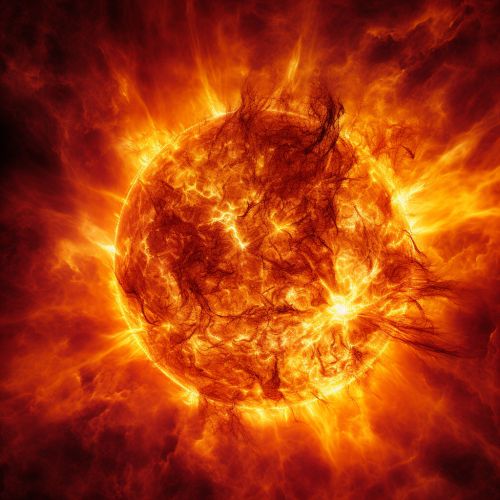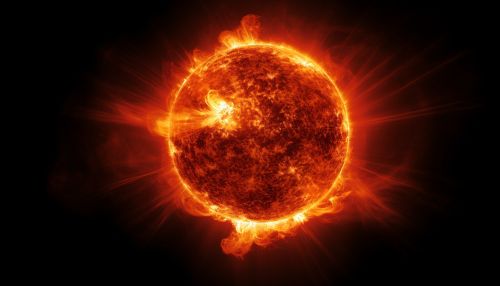Nuclear Fusion
Introduction
Nuclear fusion is a process in which two or more atomic nuclei are combined to form one or more different atomic nuclei and subatomic particles (neutrons or protons). The difference in mass between the reactants and products is manifested as the release of large amounts of energy. This process powers the Sun and stars, as mass is converted into energy according to Einstein's mass-energy equivalence principle, E=mc^2.


Principles of Nuclear Fusion
Nuclear fusion occurs when two atoms come together to form a heavier atom. This process is different from nuclear fission, where an atom splits into two smaller atoms. Fusion reactions require a significant amount of energy to overcome the Coulomb barrier between the positively charged nuclei. Once this barrier is overcome, the strong nuclear force binds the particles together.
Conditions for Nuclear Fusion
The conditions required for nuclear fusion to occur include high temperature and high pressure. The high temperature provides the kinetic energy required for the particles to overcome the Coulomb barrier. The high pressure ensures a sufficient number of particles are within a small enough volume to allow for a reasonable probability of collisions.
Types of Nuclear Fusion
There are several types of nuclear fusion, categorized by the types of nuclei involved in the reaction. The most common types include proton-proton chain reactions, CNO cycle, and triple-alpha process.
Proton-Proton Chain Reaction
The proton-proton chain reaction is the fusion process that powers the sun and other main-sequence stars. It involves the fusion of two protons to form a deuteron, with the release of a positron and a neutrino.
CNO Cycle
The CNO cycle (carbon-nitrogen-oxygen) is another set of fusion reactions by which stars convert hydrogen into helium, the second most common process after the proton-proton chain.
Triple-Alpha Process
The triple-alpha process is a set of nuclear fusion reactions by which three helium-4 nuclei are transformed into carbon.
Fusion Power
Fusion power is a proposed form of power generation that would generate electricity by using heat from nuclear fusion reactions. In a fusion process, two lighter atomic nuclei combine to form a heavier nucleus, while releasing energy. Devices designed to harness this energy are known as fusion reactors.
Challenges in Nuclear Fusion
Despite the potential benefits of nuclear fusion, there are several challenges to harnessing this process on Earth. These include the difficulty in achieving the necessary conditions, the handling of the high-energy neutrons produced, and the potential for radioactive waste.
